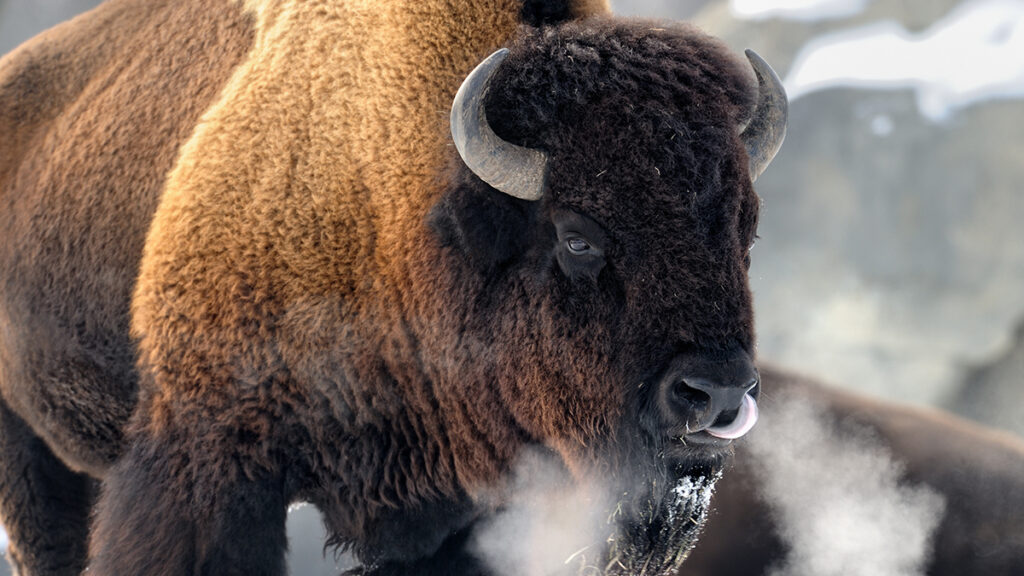Bison: The Original Red Meat
This new land protein from Vital Choice is about to disrupt grilling season.
Mar 28, 2024
April is a lovely time of year. There's more daylight. We start shedding coats and sweaters. Flowers are blossoming. And this April, Vital Choice's protein offerings are in full bloom with the launch of premier bison products that include hot dogs, burgers, and familiar steak cuts like New York strip, sirloin, and ribeye.
“We are always going to be known for seafood — that's never going to change," says Kelsey Carlstrom, associate merchandise manager at Vital Choice. “But we've been providing land-based proteins as well for quite a few years, and we wanted to introduce additional nutritious proteins that our customers are clearly interested in."
Bison certainly fits the bill.
What's the difference between bison and beef?
Often referred to as America's “original red meat" (because it sustained Native Americans for centuries), bison is actually more similar to white meat in terms of its overall calories and fat content. And when compared to beef, “bison is richer in protein, and contains fewer calories and less saturated fat," Carlstrom notes.

According to the USDA, a 100-gram serving of ground bison provides 146 calories, 20 grams of protein, and 7 grams of fat compared to 198 calories, 19 grams of protein, and 13 grams of fat for an equal-sized serving of ground beef.
Bison protein is also a vital source of heart healthy, immunity-boosting, and muscle-building micronutrients. These include vitamins B1 (thiamin), B2 (riboflavin), B3 (niacin), B6, B12, D, E, and K; minerals such as calcium, iron, magnesium, phosphorous, potassium, sodium, and zinc; and omega-3 fatty acids.
What's so special about Vital Choice bison?
Just as with the fish, Vital Choice bison is about more than just great taste. “It's about the commitment to overall quality that recurring customers trust Vital Choice to provide," says Carlstrom, noting that that quality begins with “sustainable farming practices and ethical treatment."
Vital Choice bison herds live on a family-owned farm in Nebraska, and are raised on ranges where they feed on 100% naturally occurring grasses. They also do not contain hormones, antibiotics, stimulants, or common fillers, such as water, sodium, or chemicals.
All that ensures a truly all-natural, nutrient-dense, and leaner land-based protein that is USDA, and even European Union, approved, should you choose to pack some in your suitcase for your next jaunt to the Alps. And compared to popular plant-based protein substitutes, Vital Choice bison contains 42% more protein and 85% less sodium.
Finally, to fully preserve flavor and color, the cuts are carefully air chilled, vacuum sealed, and shipped using dry ice.

What does bison taste like?
Bison has a lighter, more delicate flavor than beef; it is often described as “sweeter" and “earthier." Much of that, including its deeper reddish hue, has to do with bison's higher iron content. For that reason, and because of its pronounced absence of fat, bison cuts are most often paired with red wines that contain low tannins, have some body, and are what's known as “fruit forward" or “fruit driven." Popular pairings include pinot noir, cabernet sauvignon, and merlot.
In terms of texture, bison has a more pronounced grain than beef, which is why it's most often enjoyed as hamburgers, roasts, or steaks.
How should I cook bison?
As with most red meat, it's best to bring these cuts to room temperature before cooking and let them rest afterward.
Given its leanness and the fact that, as Carlstrom says, “bison is just a little more sensitive," the keys to preparing bison are using a bit more oil — preferably olive or avocado — and not overcooking it, which can result in a gamey taste. To be sure, bison steaks are best served rare to medium rare.
To play it safe, Carlstrom suggests starting your bison culinary adventure with “easier" cuts like burgers and working your way up to steaks. “Most people know how to cook a burger and when it's done," she says. (She also admits the burgers are her personal favorite.)
And while it can be difficult to pass up a bison burger, take a tip from this author and treat yourself to a bison ribeye topped with cremini mushrooms in a wine reduction sauce and accompanied by asparagus roasted with fresh lemon juice, sea salt, and garlic. Pair it all with an Oregon pinot noir, and you'll definitely thank me later.










